📞+86 153 7530 2641 📧 hongjing.Wang@feichuncables.com
What Factors Contribute to Voltage Drops in Port Crane Cable Systems?
Understanding the causes of voltage drop in port crane cable systems is essential for maintaining efficient operation in harbors. Learn how conductor size, cable length, insulation type, and load current affect power transmission efficiency in port cranes and how to mitigate voltage loss over long distances.
hongjing.Wang@Feichun
7/21/202510 min read

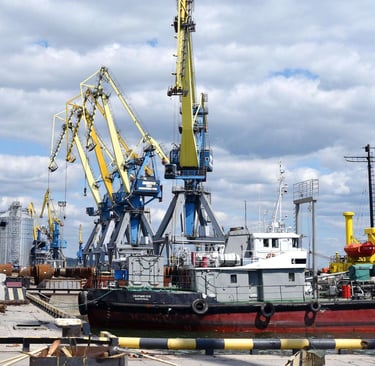
Introduction: Why Voltage Drop Matters in Port Crane Cable Systems
Voltage drop in port crane cables represents one of the most critical electrical challenges facing modern harbor operations. This phenomenon occurs when electrical energy is lost as current flows through cable conductors, resulting in reduced voltage at the load compared to the source voltage. In port crane applications, even minor voltage reductions can significantly impact crane performance, leading to reduced lifting capacity, slower operational speeds, and increased energy consumption.
The importance of managing voltage drop in harbor cranes cannot be overstated. Ship-to-shore (STS) cranes, rubber-tired gantry (RTG) cranes, and other mobile port equipment rely on consistent power delivery to maintain optimal performance during container handling operations. When voltage drop exceeds acceptable limits—typically 3-5% for motor applications—cranes experience reduced torque output, overheating of electrical components, and potential system failures that can halt port operations.
Several interconnected factors contribute to voltage drop in these demanding environments: cable length extending hundreds of meters, high current loads during peak lifting operations, conductor material and sizing decisions, ambient temperature variations, insulation quality, and connection integrity. Understanding these factors enables port engineers to design robust electrical systems that maintain power efficiency and crane performance under the most challenging operating conditions.
Cable Length and Voltage Drop Over Long Distances
The relationship between cable length and electrical resistance forms the foundation of voltage drop calculations in port crane systems. According to Ohm's law, voltage drop increases linearly with cable length due to the inherent resistance of conductor materials. This relationship becomes particularly significant in long-distance cable transmission in STS cranes, where power cables can extend 150-400 meters from shore-based substations to crane trolley systems.
In ship-to-shore crane installations, cables must traverse the waterfront, travel up the crane structure, and reach the trolley mechanism that moves along the boom. This configuration creates exceptionally long cable runs that amplify resistance-related voltage losses. A typical 400-meter cable run with inadequate conductor sizing can result in voltage drops exceeding 8-10%, severely compromising crane performance and violating electrical standards.
Yard crane applications present similar challenges, with reeling cable systems that extend and retract as cranes move along rail systems or rubber-tired pathways. These dynamic cable systems must maintain electrical integrity while accommodating mechanical stress and environmental exposure, making proper electrical design for mobile port equipment essential.
Engineering best practices for managing long cable runs include implementing voltage compensation systems, utilizing step-up transformers near the source with step-down transformers at the load, and employing larger conductor sizes to reduce resistance. Advanced installations may incorporate active voltage regulation systems that automatically adjust supply voltage to compensate for transmission losses, ensuring consistent power delivery regardless of cable length variations.
Conductor Size and Material: How It Affects Power Loss
The selection of conductor material and cross-sectional area (CSA) represents one of the most critical decisions in minimizing cable voltage loss in harbor cranes. Copper conductors, with their superior electrical conductivity of approximately 58 MS/m, remain the preferred choice for demanding port crane applications despite higher material costs compared to aluminum alternatives.
Aluminum conductors, while offering cost advantages and reduced weight, exhibit approximately 38 MS/m conductivity—roughly 35% lower than copper. This reduced conductivity translates directly into higher resistance and increased voltage drop for equivalent conductor sizes. However, aluminum's weight advantage becomes significant in overhead crane applications where cable weight affects structural loading and trolley performance.
The cross-sectional area of conductors inversely affects resistance, making proper cable sizing crucial for maintaining acceptable voltage levels. Doubling the conductor CSA reduces resistance by half, significantly improving voltage stability under high-load conditions. Port engineers must balance conductor costs against performance requirements, often specifying larger conductors than minimum electrical codes require to achieve optimal port crane power efficiency.
Improper sizing leads to excessive voltage drop in harbor crane applications, particularly during simultaneous operations such as hoisting heavy containers while traversing and trolleying. Undersized conductors create voltage instability that affects motor performance, increases energy consumption, and accelerates component wear. Professional cable sizing calculations must account for worst-case loading scenarios, ambient temperature conditions, and future expansion requirements to ensure long-term system reliability.
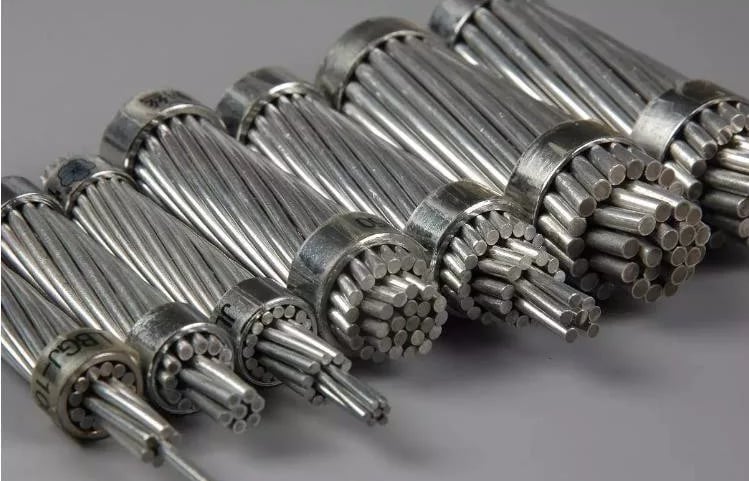

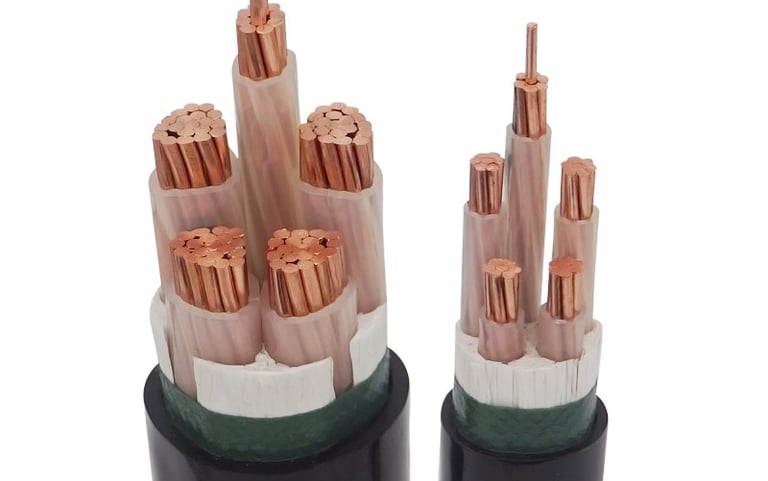

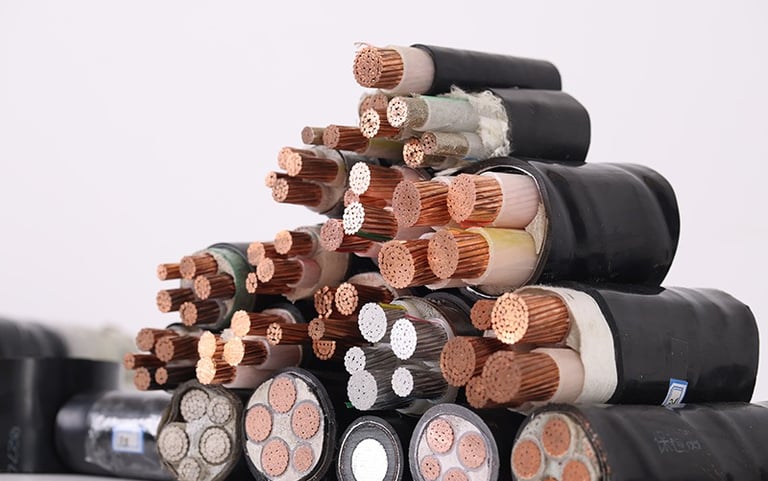

Load Current and Operating Conditions
High current loads during container lifting operations create the most demanding electrical conditions in port crane systems. Modern STS cranes handling 65-ton containers can draw instantaneous currents exceeding 1000 amperes during peak lifting operations, creating substantial voltage drops across even properly sized cable systems. These extreme loading conditions require careful analysis of factors affecting crane cable performance to maintain operational efficiency.
Sudden peak demands during combined crane movements—simultaneous hoist, trolley, and gantry operations—create voltage instability that can trigger protective relay operations or cause motor torque reductions. The dynamic nature of crane operations means that load currents fluctuate rapidly, creating transient voltage variations that can affect control system operation and motor performance.
Real-world examples from major container terminals demonstrate how inadequate electrical design can limit crane productivity. One documented case involved STS cranes experiencing 12% voltage drops during peak operations, resulting in 25% longer cycle times and increased energy consumption. The solution required upgrading conductor sizes and implementing voltage compensation systems to restore normal performance levels.
Understanding the relationship between load current and voltage drop enables engineers to specify appropriate cable systems and implement protective measures. Current monitoring systems can provide real-time feedback on electrical loading, enabling operators to optimize crane movements and prevent excessive voltage drops that compromise performance.
Ambient Temperature and Cable Resistance
Temperature effects on cable resistance significantly impact voltage performance in port environments, where ambient temperatures can range from sub-zero conditions to extreme heat exceeding 50°C. Copper conductor resistance increases approximately 0.4% per degree Celsius, meaning that a 30°C temperature rise can increase resistance by 12%, directly contributing to higher voltage drops.
Port environments with high ambient or surface temperatures present unique challenges for cable systems. Asphalt surfaces can reach temperatures exceeding 70°C during summer operations, while cables in direct sunlight experience additional thermal loading. These elevated temperatures not only increase conductor resistance but can also accelerate insulation degradation, compounding voltage drop issues over time.
Marine environments introduce additional temperature-related challenges, including thermal cycling from day-night temperature variations and seasonal changes. Cables must maintain electrical performance across wide temperature ranges while withstanding mechanical stress from thermal expansion and contraction. This thermal cycling can create micro-cracks in conductor strands, increasing resistance and voltage drop over time.
Choosing temperature-rated cables for stable voltage output requires careful consideration of operating environment conditions and proper derating calculations. Cables rated for higher temperatures maintain better electrical performance under thermal stress, while proper installation techniques such as adequate spacing, ventilation, and thermal barriers help minimize temperature-related voltage variations.
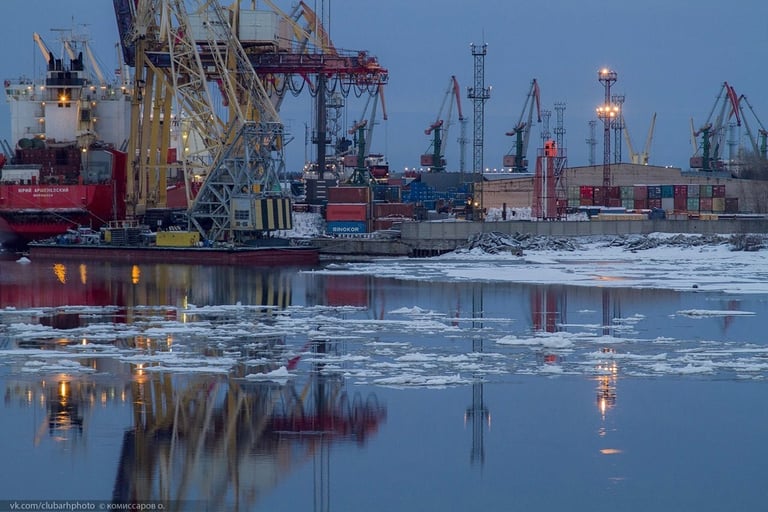



Insulation and Sheath Type
The influence of insulation resistance on system voltage extends beyond simple electrical isolation, affecting overall cable performance and longevity in demanding port environments. High-quality insulation materials maintain their electrical properties under mechanical stress, temperature variations, and environmental exposure, preventing leakage currents that can contribute to voltage instability.
Marine-grade cable insulation incorporates specialized compounds designed to resist salt spray, UV radiation, and mechanical abrasion common in harbor environments. These premium insulation systems typically utilize cross-linked polyethylene (XLPE) or ethylene propylene rubber (EPR) compounds that maintain electrical integrity under harsh conditions. Standard cable insulation may degrade rapidly in marine environments, leading to increased leakage currents and voltage drop issues.
The outer sheath material plays a crucial role in protecting internal conductors and insulation from environmental damage. Thermoplastic or thermoset compounds with enhanced resistance to oils, chemicals, and abrasion help ensure long-term electrical performance. Some applications require specialized sheath materials such as chloroprene or polyurethane for extreme flexibility and durability in reeling cable applications.
Insulation degradation can worsen voltage drops through multiple mechanisms: increased leakage current between conductors, moisture ingress leading to conductor corrosion, and mechanical damage exposing conductors to environmental contamination. Regular insulation testing using megohm meters helps identify degradation before it affects system performance, enabling proactive maintenance and replacement scheduling.
Connection Quality and Contact Resistance
Poor terminations and corroded contacts represent hidden sources of voltage drop that can significantly impact port crane electrical systems. Contact resistance at cable terminations, connector interfaces, and switching equipment creates localized voltage drops that compound transmission losses throughout the system. Even minor corrosion or loose connections can introduce milliohm-level resistance that translates into significant voltage drops under high-current conditions.
Harbor environments are particularly prone to salt corrosion, which accelerates contact degradation and increases resistance over time. Salt-laden air penetrates electrical enclosures, creating conductive films on contact surfaces that promote galvanic corrosion. This process gradually increases contact resistance, leading to progressive voltage drop increases and potential hot-spot formation at connection points.
Proper connector selection and installation techniques are essential for minimizing contact resistance in marine cable electrical resistance applications. Gold or tin-plated contacts resist corrosion better than bare copper or aluminum surfaces, while environmental sealing prevents moisture and contaminant ingress. Torque specifications must be carefully followed during installation to ensure adequate contact pressure without damaging conductor strands or connector hardware.
Routine inspection of connectors and joints forms a critical component of preventive maintenance programs aimed at preventing voltage loss. Thermal imaging surveys can identify high-resistance connections before they cause system failures, while contact resistance measurements provide quantitative assessment of connection quality. Regular cleaning and re-torquing of connections helps maintain low contact resistance throughout the system lifecycle.
How to Minimize Voltage Drop in Port Crane Cable Systems
Implementing effective strategies to minimize voltage drop requires a comprehensive approach combining proper design, quality components, and ongoing maintenance. Cable sizing represents the most fundamental consideration, with engineers typically specifying conductors 25-50% larger than minimum code requirements to accommodate future loading and maintain optimal voltage levels throughout the system lifecycle.
Reducing transmission distances through strategic electrical distribution design can significantly improve voltage performance. Installing substations or transformer locations closer to crane positions reduces cable lengths and associated voltage drops. Mobile substations that move with traveling cranes offer another approach to maintaining short cable runs while accommodating crane mobility requirements.
Using low-resistance conductors such as high-purity copper or specialized alloys can provide marginal improvements in voltage performance. Some applications employ copper-clad aluminum conductors that combine copper's electrical performance with aluminum's weight advantages, though cost considerations often limit their adoption to specialized applications.
Voltage drop calculators enable engineers to model various design scenarios and optimize cable selection for specific applications. These tools incorporate conductor properties, installation conditions, and loading parameters to predict voltage performance under various operating conditions. Professional software packages can model complex reeling cable systems and dynamic loading conditions common in port crane applications.
Industry standards such as AS/NZS 3008 and VDE 0298 provide guidance for cable selection and voltage drop calculations in industrial applications. These standards establish maximum acceptable voltage drop limits and provide calculation methodologies that ensure consistent system performance. IEC standards offer additional guidance for marine and mobile equipment applications.
Advanced solutions include active voltage compensation systems that automatically adjust supply voltage to maintain constant load voltage regardless of transmission losses. These systems utilize electronic controls to monitor load voltage and adjust transformer tap settings or electronic regulators to compensate for voltage drop variations during crane operations.
Conclusion
Understanding and managing voltage drop in port crane cable systems requires comprehensive attention to multiple interconnected factors that affect electrical performance. Cable length, conductor sizing and material selection, load current characteristics, environmental conditions, insulation quality, and connection integrity all contribute to overall system voltage performance in demanding harbor environments.
The complexity of modern port operations, with increasingly heavy container loads and faster cycle time requirements, places greater demands on electrical systems to maintain consistent power delivery. Voltage instability in reeling cables and other mobile equipment can significantly impact productivity and increase operational costs through reduced crane performance and increased energy consumption.
Preventive design approaches that incorporate proper cable sizing, quality materials, and environmental considerations provide the foundation for reliable electrical systems. However, ongoing maintenance and monitoring programs are equally important for identifying and addressing voltage drop issues before they impact crane operations. Regular inspection of connections, thermal monitoring of electrical components, and periodic voltage measurements help ensure continued system performance.
The economic impact of voltage drop extends beyond immediate electrical losses to include reduced crane productivity, increased maintenance costs, and potential equipment failures that can halt port operations. Investing in proper electrical design and quality components typically provides rapid payback through improved operational efficiency and reduced maintenance requirements.
Port engineers and maintenance professionals should embrace proactive evaluation of voltage performance in port crane cable systems as part of comprehensive asset management strategies. Advanced monitoring systems that provide real-time voltage and current measurements enable data-driven decisions about maintenance scheduling and system upgrades, ensuring optimal crane performance throughout the equipment lifecycle while minimizing the risk of unexpected failures that can disrupt critical port operations.
FAQs
Q1: What is considered an acceptable voltage drop in port crane cable systems?
A: For most port crane applications, an acceptable voltage drop is typically limited to 3–5% of the nominal system voltage. However, for sensitive electronic control systems or long-distance reeling cables, lower drops (1–3%) may be required to maintain efficiency and avoid malfunctions.
Q2: How does cable length affect voltage drop in harbor crane operations?
A: Longer cable runs increase resistance, which leads to higher voltage drops. In ship-to-shore cranes or yard cranes, where mobile equipment requires extended cable lengths, the drop can become significant without proper conductor sizing or voltage compensation measures.
Q3: Why is conductor size important in minimizing voltage loss in marine crane cables?
A: Larger conductors have lower resistance, reducing voltage loss. Selecting the appropriate cross-sectional area (CSA) for the current load is essential to prevent performance degradation, overheating, or equipment failure.
Q4: Can high ambient temperatures worsen voltage drops in port crane cables?
A: Yes. Elevated temperatures increase the resistance of conductors, especially in rubber or PUR-sheathed cables. This effect is pronounced in exposed dockside environments or in cables bundled together with poor ventilation.
Q5: What cable insulation types help reduce voltage instability in port cranes?
A: High-quality insulation such as EPR, XLPE, or PUR sheathing maintains better dielectric performance and prevents leakage currents. These materials are especially effective in marine environments where humidity and salt can degrade standard insulation.
Q6: How do port conditions like moisture or corrosion impact voltage drop?
A: Salty air, water ingress, and mechanical abrasion can lead to corroded connections or damaged insulation, increasing contact resistance and accelerating voltage loss. IP-rated connectors and regular maintenance are essential in mitigating these risks.
Q7: Are there standards or tools to help calculate voltage drop in crane cable layouts?
A: Yes. Standards like AS/NZS 3008, IEC 60287, and software-based voltage drop calculators help engineers design compliant cable systems for long cable runs and high-current loads typical in port operations.
Q8: What symptoms indicate a voltage drop problem in port crane equipment?
A: Common signs include motor underperformance, sluggish lifting speeds, frequent tripping of circuit protection, or overheating of cables and connectors. Real-time voltage monitoring systems can help detect early-stage drop issues.
How to Reach Us
Get in Touch
SiteMap
Product Catalogue
Reeling Cable
Festoon Cable
Shore Power Cable




Scan to add us on WeChat
